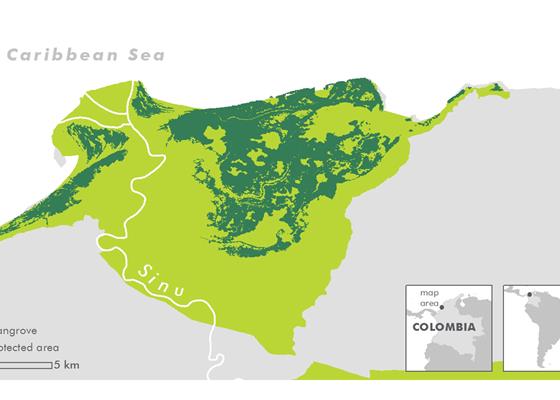Coastal wetlands — known as “blue carbon” ecosystems — store up to 10 times the carbon per unit area as terrestrial forests, making them a vital ally in the fight against climate change. A new project from Conservation International will directly address the threats to carbon-rich mangrove forests in Colombia, conserving and restoring 11,000 hectares (27,000 acres) of natural forests. The project will remove an estimated 1 million tons of carbon dioxide from the atmosphere in its lifetime.
